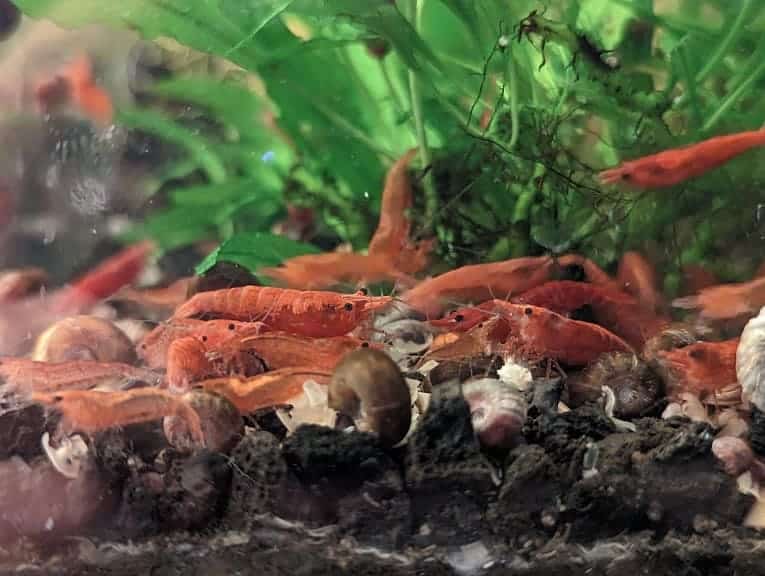If you see your berried female Cherry Shrimps (which is also known as the Neocaridina Shrimps) no longer carrying any eggs, then it may indicate that the babies may have been born. If you have a hard time spotting these infants, then you can take a look at this guide at Aquarium Blueprints.
1. The first step you can take is to make sure that you aren’t keeping any potential predators in the same tank. Even if these fish never attacked your adult shrimps previously, they may end up eating the smaller sized ones.
In general, we recommend that you keep Cherries by themselves or with slow moving snails. A vast majority of fish in the aquarium hobby may end up eating the dwarf shrimps.
By removing any potential predators, you may end up seeing the baby inverts appear more frequently as they don’t have to spend a lot of time hiding from threats.
2. It is also important to note that the adolescents can easily get sucked up into canister, hang-on-back, power and other filters.
If they managed to survive, then they may end up living in the filter instead of the tank. Therefore, you can try inspecting the sponges, media compartments and other areas of the filter to see if you can find any of the missing babies.
To prevent the smaller inverts from begin sucked up, you can add a pre-filter sponge to the intake of your filter. Alternatively, you can replace your current filter with a sponge filter, which is what we used in our Red Cherry Shrimp tank.

3. The baby shrimps should be more likely to come out when they sense food. During meal time, we recommend that you spread out the food all over the tank to see if you are able to get the smaller size shrimps to come out of hiding.
4. It is important to note that the babies are extremely hard to find even if they are out and about. This is because they are only the side of the tip of a pencil when they are newly born.
So, if you can’t initially find them, then it may not be a big deal as long as you don’t have any predators in the same tank on addition to properly preparing your filter to prevent it from sucking up the smaller shrimps.
It may take up to a month or two until you the babies grow into juveniles and, therefore, become easier to spot.
You can try speeding up their growth rate by increasing the temperature in your tank. If you do so, however, you may also end up aging the adult shrimps quicker.
Of course, you can try adding more food to the tank to give more nutrients for your babies to grow faster in size.

5. There is a possibility that the pregnant females in your colony may have dropped their eggs.
